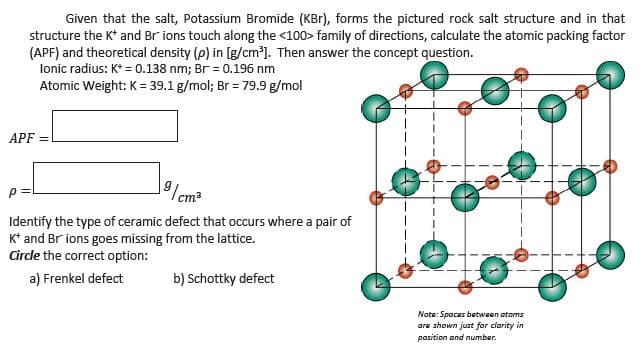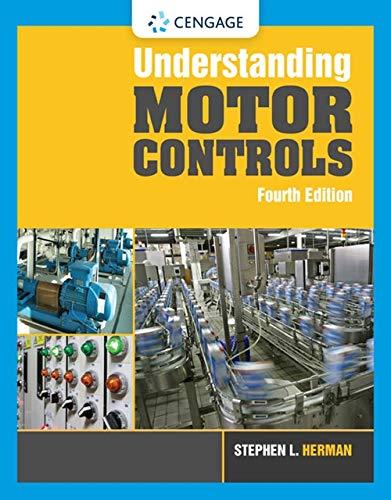Given that the salt, Potassium Bromide (KBr), forms the pictured rock salt structure and in that structure the K* and Br ions touch along the <100> family of directions, calculate the atomic packing factor (APF) and theoretical density (p) in [g/cm'). Then answer the concept question. lonic radius: K* = 0.138 nm; Br = 0.196 nm Atomic Weight: K = 39.1 g/mol; Br = 79.9 g/mol APF = 9 /cm² Identify the type of ceramic defect that occurs where a pair of K* and Br ions goes missing from the lattice. Circle the correct option: a) Frenkel defect b) Schottky defect Note: Spaces between atoms
Given that the salt, Potassium Bromide (KBr), forms the pictured rock salt structure and in that structure the K* and Br ions touch along the <100> family of directions, calculate the atomic packing factor (APF) and theoretical density (p) in [g/cm'). Then answer the concept question. lonic radius: K* = 0.138 nm; Br = 0.196 nm Atomic Weight: K = 39.1 g/mol; Br = 79.9 g/mol APF = 9 /cm² Identify the type of ceramic defect that occurs where a pair of K* and Br ions goes missing from the lattice. Circle the correct option: a) Frenkel defect b) Schottky defect Note: Spaces between atoms
Understanding Motor Controls
4th Edition
ISBN:9781337798686
Author:Stephen L. Herman
Publisher:Stephen L. Herman
Chapter44: Semiconductors
Section: Chapter Questions
Problem 4RQ
Related questions
Question

Transcribed Image Text:Given that the salt, Potassium Bromide (KBr), forms the pictured rock salt structure and in that
structure the K* and Br ions touch along the <100> family of directions, calculate the atomic packing factor
(APF) and theoretical density (p) in [g/cm'). Then answer the concept question.
lonic radius: K* = 0.138 nm; Br = 0.196 nm
Atomic Weight: K = 39.1 g/mol; Br = 79.9 g/mol
APF =
9 /cm²
Identify the type of ceramic defect that occurs where a pair of
K* and Br ions goes missing from the lattice.
Circle the correct option:
a) Frenkel defect
b) Schottky defect
Note: Spaces between atoms
Expert Solution
This question has been solved!
Explore an expertly crafted, step-by-step solution for a thorough understanding of key concepts.
This is a popular solution!
Trending now
This is a popular solution!
Step by step
Solved in 5 steps with 10 images

Knowledge Booster
Learn more about
Need a deep-dive on the concept behind this application? Look no further. Learn more about this topic, mechanical-engineering and related others by exploring similar questions and additional content below.Recommended textbooks for you

Understanding Motor Controls
Mechanical Engineering
ISBN:
9781337798686
Author:
Stephen L. Herman
Publisher:
Delmar Cengage Learning

Understanding Motor Controls
Mechanical Engineering
ISBN:
9781337798686
Author:
Stephen L. Herman
Publisher:
Delmar Cengage Learning